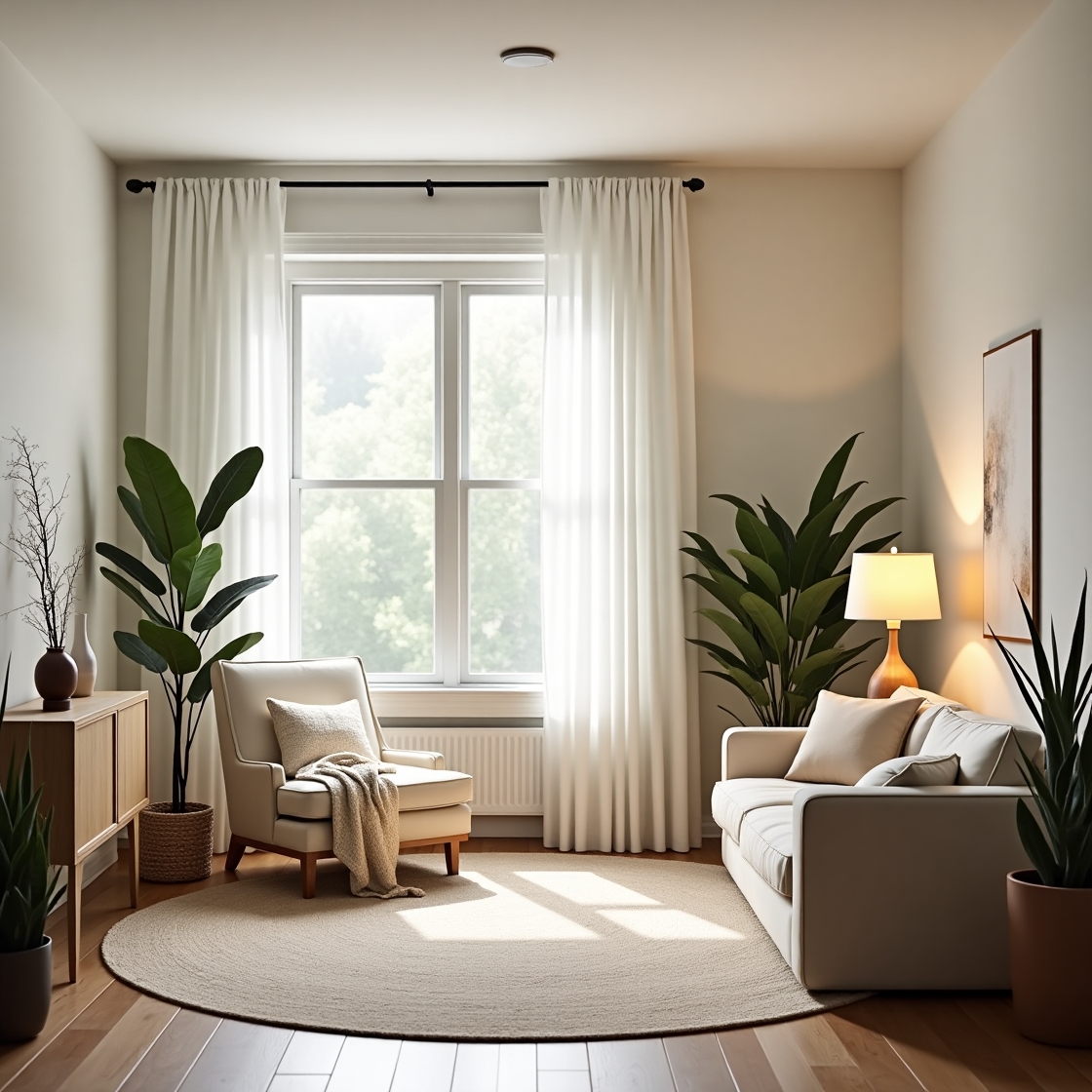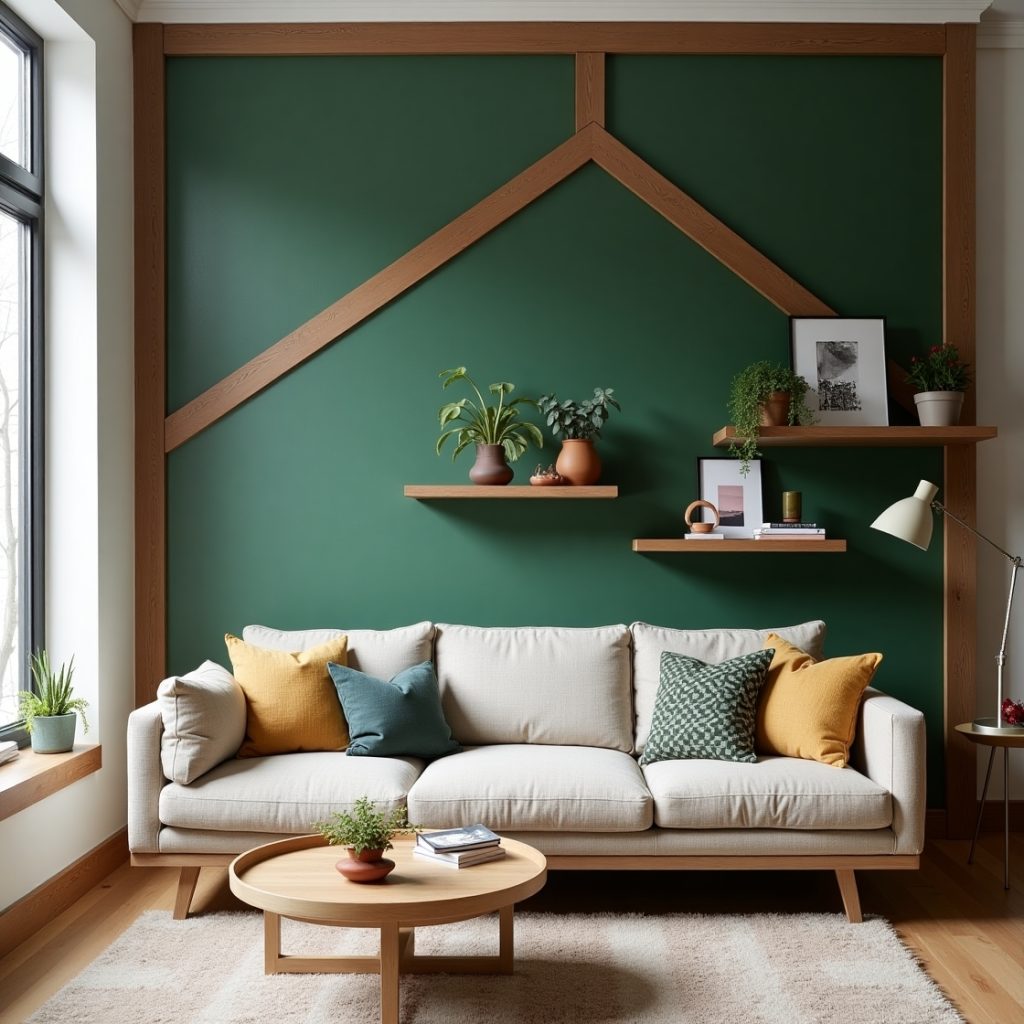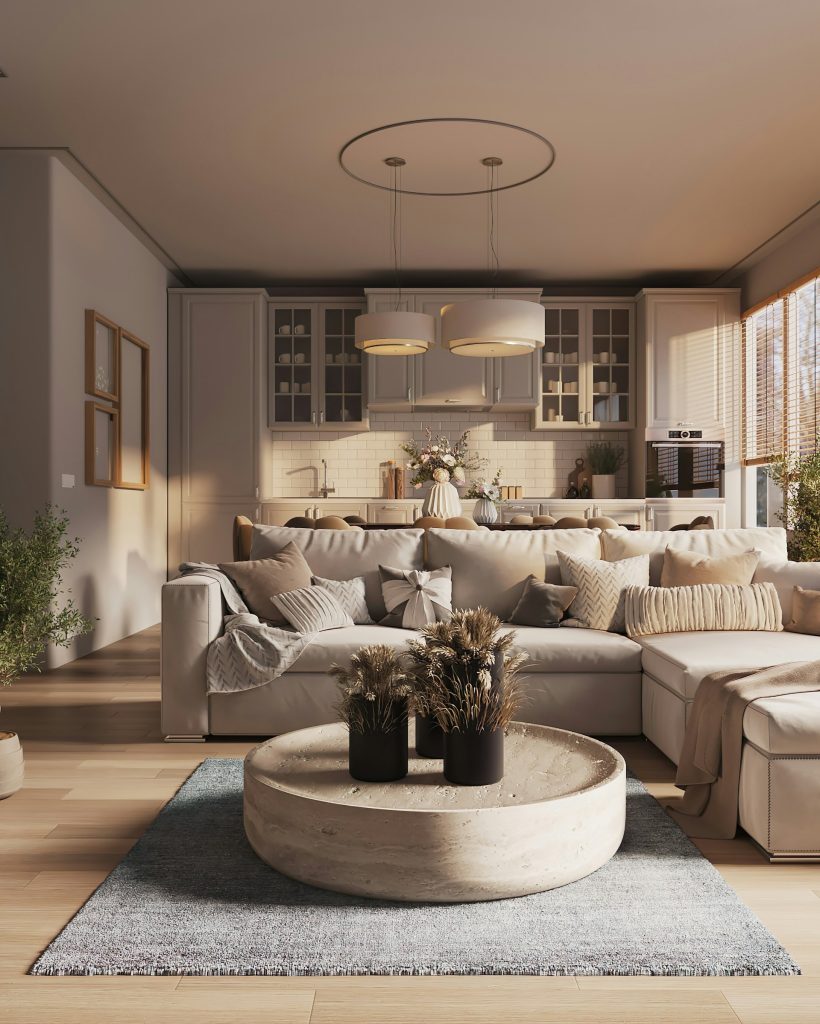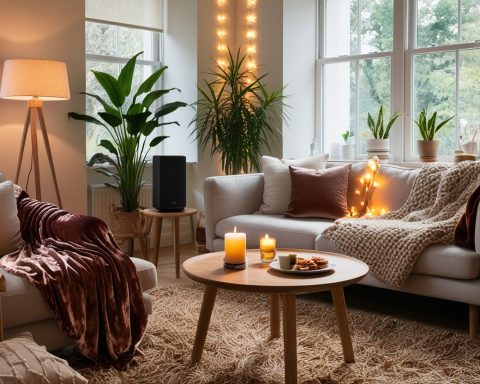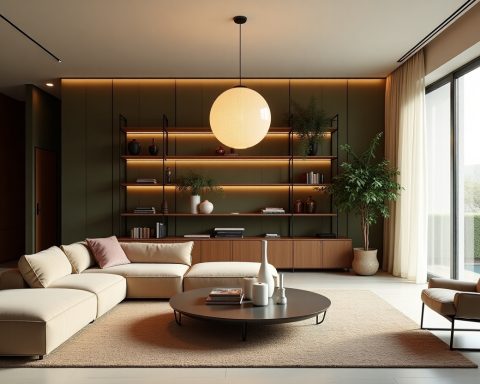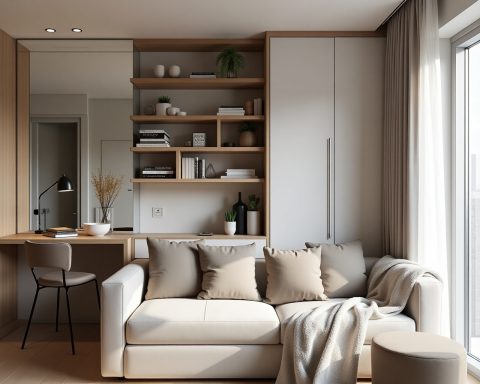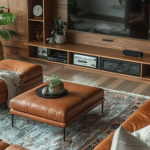Your home transcends its function as mere shelter; it is your deeply personal sanctuary, a refuge from the demands of the outside world. The deliberate design of your living space possesses a profound and often underestimated impact on your daily emotional landscape. From its capacity to alleviate stress and enhance mental focus to its ability to foster a sense of calm and rejuvenation, the right environment can actively nurture your mental wellness, providing a vital space to recharge and reconnect with yourself.
In this insightful guide, you will discover practical strategies to design a home that radiates calmness, embodies intention, and promotes a sense of healing, drawing upon proven design principles and implementing simple yet transformative changes. Whether you reside in a compact studio apartment or a sprawling family home, these actionable tips will empower you to cultivate an environment that genuinely supports your mind, uplifts your mood, and fosters overall emotional well-being.
1. Embrace a Tranquil Color Palette: The Language of Emotion
Color wields a direct and powerful influence over your mood and energy levels.
- Opt for soft neutrals and grounding earthy tones such as serene beige, calming taupe, natural sage, and comforting warm grays, all known to promote a sense of calmness and stability.
- Introduce the soothing hues of blues and greens, which mirror the tranquility of nature and have been scientifically linked to reducing anxiety and fostering a sense of peace.
- Strategically avoid overly bright or jarring colors, particularly in your designated relaxation zones; reserve these more stimulating shades for areas dedicated to creative pursuits and higher energy activities.
2. Maximize the Gift of Natural Light: Illuminating Your Mood
Abundant natural light is a potent mood booster, capable of transforming the ambiance of your home.
- Strategically open up windows to their fullest potential, utilize sheer and light-filtering curtains to diffuse harsh glare while allowing sunlight to penetrate, and thoughtfully reposition furniture to optimize the flow of daylight throughout your rooms.
- Employ the reflective power of mirrors to strategically bounce and distribute natural light, enhancing the brightness and spaciousness of your interior.
- Replace cool-toned light bulbs with warm, soft white LED alternatives to cultivate a cozier and more inviting ambiance, particularly during evening hours.
3. Bring the Healing Power of Nature Indoors: The Principles of Biophilic Design
Biophilic design, the practice of consciously connecting with nature within our built environments, offers significant benefits for mental and emotional health.
- Introduce a variety of houseplants known for their air-purifying qualities and visual appeal, such as resilient pothos, architectural snake plants, or the calming presence of peace lilies.
- Incorporate natural materials like the warmth of wood, the grounding texture of stone, the relaxed feel of rattan, and the soft touch of linen in your furniture and décor.
- Decorate with botanical art or nature photography to establish a strong visual connection to the outdoors, even when physically inside.
4. Declutter and Simplify Your Surroundings: Cultivating Mental Clarity
A physically clear and organized space often translates directly to a clearer and more focused mind.
- Be intentional about letting go of items that no longer serve a positive purpose in your life – consider donating, storing items you rarely use, or creatively repurposing them.
- Utilize closed storage solutions such as cabinets, drawers, and storage boxes to conceal visual clutter while ensuring essential items remain easily accessible.
- Embrace the principles of “intentional minimalism” – consciously surround yourself with only those possessions that genuinely bring you joy, serve a practical purpose, or evoke a sense of peace.
5. Create Dedicated Zones for Nurturing Self-Care: Intentional Spaces for Well-being
Designate specific areas within your home that are intentionally purposed to support your wellness routines and promote relaxation.
- Set up a cozy and inviting reading corner complete with a comfortable armchair, soft and adjustable lighting, and a convenient side table for beverages or reading materials.
- Establish a calm and tranquil nook for meditation or journaling, utilizing comfortable cushions, soft blankets, and perhaps incorporating calming essential oils and gentle lighting.
- Carve out a dedicated space for creative expression – whether it’s a small art station, a musical instrument corner, or a crafting desk, even a designated shelf can serve this purpose.
6. Choose Furniture that Prioritizes Comfort and Support: The Foundation of Relaxation
Physical comfort is intrinsically linked to feelings of relaxation, security, and emotional grounding within your home.
- Invest in ergonomic seating that provides proper support for your body and select soft and inviting textiles that encourage rest and relaxation.
- Introduce layers of comfort with plush cushions, cozy throws, and soft area rugs to add warmth, texture, and a sense of physical well-being.
- Arrange furniture thoughtfully to promote a natural flow of movement throughout the space and avoid creating tight or awkward walkways that can contribute to feelings of unease.
7. Harness the Power of Scent to Elevate Your Mood: The Olfactory Connection
Our sense of smell is deeply and powerfully connected to our emotions, memories, and overall well-being.
- Utilize calming and mood-enhancing scents such as soothing lavender, grounding sandalwood, refreshing eucalyptus, or comforting vanilla.
- Incorporate a diffuser for essential oils, natural soy candles, or fragrant incense into your favorite living spaces to gently infuse the air with these beneficial aromas.
- Strategically switch scents throughout the day to create different desired effects – perhaps energizing citrus in the morning and relaxing lavender in the evening.
8. Surround Yourself With Decor that Holds Meaning: Visual Anchors of Peace
The objects you see every day within your home should resonate with your values, evoke positive emotions, and contribute to your sense of peace.
- Display cherished photographs, meaningful artwork, or inspiring quotes that make you feel grounded, uplifted, and connected to what is important to you.
- Opt for calming and serene imagery such as depictions of nature, abstract art with soothing colors, or soft and flowing line drawings.
- Choose your decor items with intention and purpose, focusing not solely on aesthetics but also on the emotional resonance they hold for you.
9. Reduce Noise and Cultivate Quiet Spaces: Finding Sanctuary in Silence
Excessive noise pollution can significantly contribute to feelings of anxiety, stress, and sensory overwhelm.
- Introduce soft textiles such as plush area rugs, thick curtains, and numerous cushions to effectively absorb and dampen unwanted sounds within your home.
- Utilize noise-canceling headphones or devices, white noise machines to mask distracting sounds, or play soft and calming background music.
- Designate at least one specific area within your home as a dedicated “no-phone, no-tech zone” where you can intentionally disconnect and unwind in complete tranquility.
10. Design for the Flow of Daily Rituals: Supporting Routine and Well-being
Mental wellness often thrives on the comforting structure and predictability of daily routines.
- Keep calming and self-care tools easily accessible such as journals for reflection, herbal teas for relaxation, or meditation and mindfulness apps on a readily available device.
- Utilize trays, stylish baskets, or small carts to neatly organize your self-care or relaxation essentials, making them readily available when needed.
- Design your living space in a way that actively supports your desired habits and routines, rather than simply focusing on visual appeal.
11. Incorporate Elements that Engage the Senses: A Holistic Approach
Beyond sight, engage your other senses to create a more holistic and supportive environment.
- Introduce soft and comforting textures through throws, pillows, and rugs that invite touch and promote relaxation.
- Consider incorporating gentle water features like small tabletop fountains to introduce calming sounds and a sense of tranquility.
- Pay attention to the tactile experience of everyday objects, choosing items that feel pleasant to use.
12. Create Transitions Between Spaces: Promoting a Sense of Flow
Design smooth and intentional transitions between different areas of your home to foster a sense of calm and continuity.
- Use consistent flooring or color palettes to visually connect different rooms.
- Consider archways or open doorways to create a sense of flow rather than abrupt separations.
- Place calming elements like plants or artwork in transitional spaces.
13. Optimize Air Quality: Breathing Easier, Feeling Better
The quality of the air you breathe indoors can significantly impact your mood and overall well-being.
- Invest in an air purifier to remove dust, allergens, and other pollutants.
- Ensure good ventilation by opening windows regularly to circulate fresh air.
- Choose houseplants known for their air-purifying qualities.
14. Personalize with Objects of Joy and Positive Memories: Anchors of Happiness
Surround yourself with items that evoke positive emotions and happy memories.
- Display souvenirs from meaningful travels, gifts from loved ones, or objects that represent personal achievements.
- Create a “memory corner” where you can showcase these cherished items.
- Regularly rotate these items to keep your environment feeling fresh and engaging.
15. Design for Flexibility and Adaptability: A Home that Evolves with You
Recognize that your needs and preferences may change over time and design your space to accommodate this.
- Choose furniture that can be easily rearranged or repurposed.
- Opt for modular storage solutions that can be added to or reconfigured as needed.
- Embrace a mindset of continuous evolution and be willing to adjust your space as your life changes.
16. Cultivate a Connection to Your Community (Even Indoors): Expanding Your Sense of Belonging
While your home is your sanctuary, fostering a sense of connection to the wider world can also contribute to well-being.
- Display artwork by local artists or crafts from your community.
- Create a welcoming space for guests.
- Consider incorporating elements that reflect your cultural heritage.
Final Thoughts: Your Home, Your Personalized Healing Space
Designing a living space that profoundly supports your mental and emotional wellness transcends mere aesthetics; it is a deeply personal journey focused on function, sensory experience, and emotional resonance. You do not require extensive renovations or expensive upgrades to achieve this transformative environment. Often, it is the seemingly smallest adjustments – a thoughtfully placed soft chair, the gentle infusion of natural sunlight, the calming presence of a plant on your desk – that yield the most significant positive impact.
Begin with a single area, a single room, or even a single feeling you aspire to cultivate within your home. From that intentional starting point, allow your space to gradually evolve, becoming a true reflection of your inner needs and a steadfast source of support for your overall well-being.
